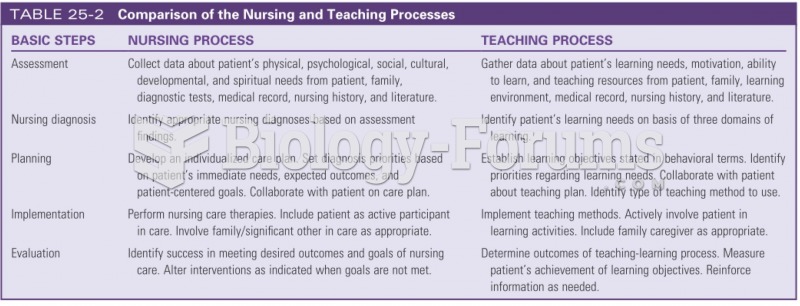Answer to Question 1
Correct Answer: 2,3
Rationale 1: Medications used to treat angina decrease the heart rate.
Rationale 2: Medications that dilate the veins so that the heart receives less blood treat angina by decreasing preload.
Rationale 3: Medications that cause the heart to contract with less force reduce contractility and are useful in treating angina.
Rationale 4: Medications used to treat angina decrease blood pressure.
Rationale 5: Antianginal medications do not cause the body to produce more red blood cells.
Global Rationale: Medications that dilate the veins so that the heart receives less blood treat angina by decreasing preload. Medications that cause the heart to contract with less force reduce contractility and are useful in treating angina. Medications used to treat angina decrease the heart rate and blood pressure. These medications do not cause the body to produce more red blood cells.
Answer to Question 2
Correct Answer: 2,3,4
Rationale 1: It is not necessary to eliminate the consumption of alcohol. It is recommended that the client decrease consumption to small or moderate amounts.
Rationale 2: It is recommended that clients eliminate foods high in cholesterol and saturated fats in order to decrease the risk of CAD.
Rationale 3: Keeping blood pressure within normal levels decreases the risk of CAD.
Rationale 4: Exercising and maintaining a healthy weight decrease the risk of CAD.
Rationale 5: The client should be encouraged to eliminate tobacco products, not just decrease the number of cigarettes smoked.
Global Rationale: It is recommended that clients eliminate foods high in cholesterol and saturated fats in order to decrease the risk of CAD. Keeping blood pressure within normal levels decreases the risk of CAD. Exercising and maintaining a healthy weight decrease the risk of CAD. It is not necessary to eliminate the consumption of alcohol. It is recommended that the client decrease consumption to small or moderate amounts. The client should be encouraged to eliminate tobacco products, not just decrease the number of cigarettes smoked.







